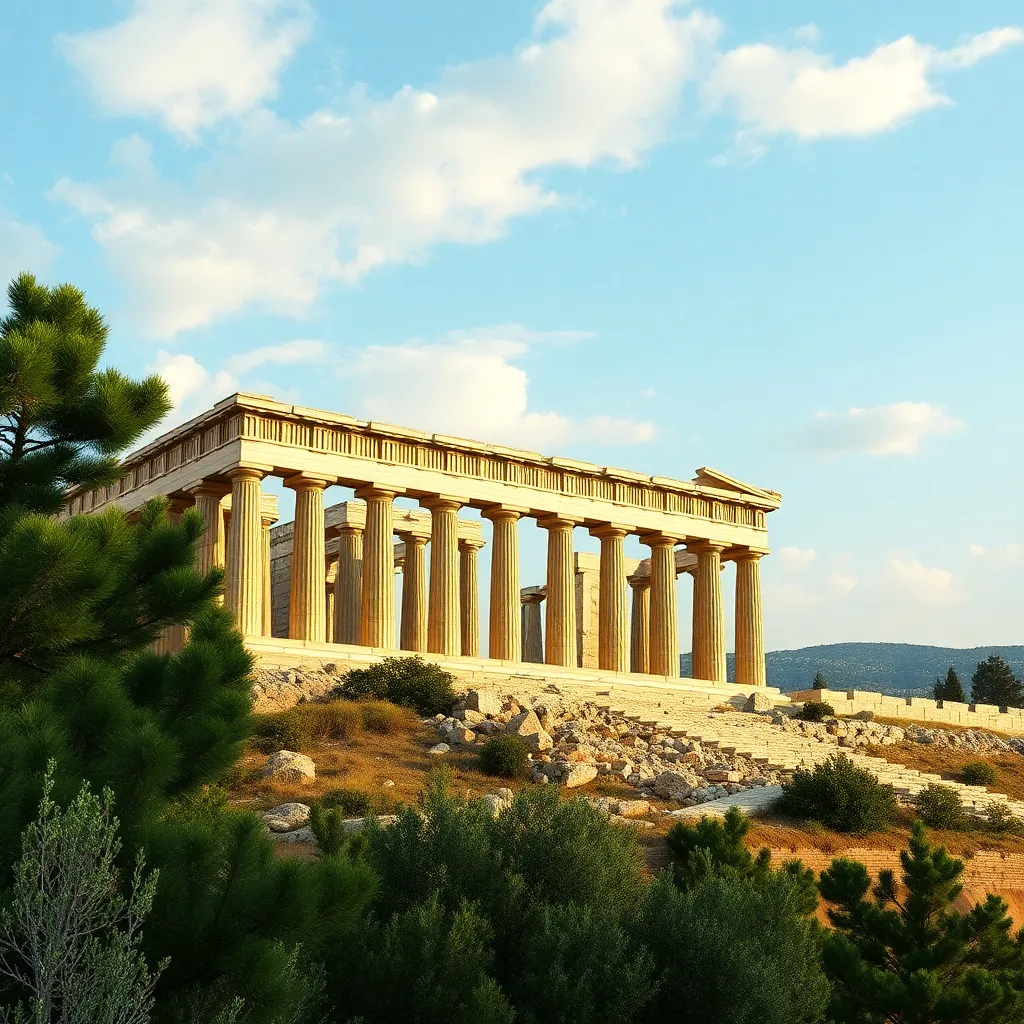The Significance of the Athenian Acropolis: A Tribute to Athena
I. Introduction
The Athenian Acropolis stands as a monumental testament to the cultural and artistic achievements of ancient Greece. Perched high above the city of Athens, this ancient citadel is not only an architectural wonder but also a profound symbol of Athenian identity and religious devotion. Central to this identity is the goddess Athena, the city’s patron deity, whose importance is reflected in the various structures that comprise the Acropolis.
This article aims to explore the Athenian Acropolis as a tribute to Athena, delving into its historical context, architectural marvels, religious significance, and its enduring legacy in art and literature.
II. Historical Context of the Acropolis
A. The origins of the Acropolis in ancient Athens
The Acropolis of Athens has its roots in the Neolithic period, with evidence of human habitation dating back to around 4000 BC. However, it was during the Mycenaean period (circa 1600-1100 BC) that the Acropolis began to take on its significant religious and political functions.
B. Key historical events shaping the Acropolis
Throughout its history, the Acropolis has witnessed pivotal events, including:
- The construction of the first temples dedicated to Athena around the 6th century BC.
- The Persian invasion and subsequent destruction of the Acropolis in 480 BC.
- The rebuilding efforts led by Pericles, which resulted in the iconic structures we see today.
C. The role of the Acropolis in Athenian society
The Acropolis served not only as a religious center but also as a symbol of Athenian power and cultural superiority. It became a gathering place for civic life and a source of pride for the citizens of Athens.
III. Architectural Marvels of the Acropolis
A. Overview of major structures (Parthenon, Erechtheion, etc.)
The Acropolis is home to several remarkable structures, each with its unique significance:
- Parthenon: A temple dedicated to Athena Parthenos, showcasing the height of classical architecture.
- Erechtheion: A temple that housed sacred relics and was dedicated to both Athena and Poseidon.
- Temple of Athena Nike: A small temple commemorating Athena as the goddess of victory.
B. Symbolism of architectural designs dedicated to Athena
The architectural designs of these temples symbolize various aspects of Athena’s character, such as wisdom, warfare, and civic virtue, reflecting the values of Athenian society.
C. Innovations in construction techniques used at the Acropolis
The Acropolis is also renowned for its innovative construction techniques, including:
- The use of pentelic marble, which provided a lustrous finish to the structures.
- Advanced techniques in stone cutting and assembly that have allowed these structures to withstand the test of time.
IV. The Parthenon: A Masterpiece of Classical Architecture
A. Historical significance of the Parthenon
The Parthenon, completed in 432 BC, is perhaps the most famous structure of the Acropolis. It was not only a temple but also a treasury and a symbol of the power and wealth of Athens during its Golden Age.
B. Artistic elements and sculptures dedicated to Athena
The Parthenon is adorned with exquisite sculptures, including the frieze depicting the Panathenaic procession and the majestic statue of Athena sculpted by Phidias, which stood within the temple.
C. The Parthenon as a symbol of Athenian democracy and power
The architectural grandeur of the Parthenon reflects the ideals of democracy and civic pride, making it a lasting symbol of Athenian identity and the city’s political power.
V. Religious Significance and Rituals
A. The Acropolis as a sacred site for worshipping Athena
The Acropolis was regarded as a sacred precinct, where Athenians would come to worship Athena and seek her guidance and protection.
B. Major festivals and rituals held in honor of Athena (e.g., Panathenaea)
One of the most significant festivals was the Panathenaea, which included:
- Processions to the Acropolis.
- Offerings and sacrifices to Athena.
- Competitions in music, poetry, and athleticism.
C. Role of the Acropolis in Athenian religious life
The Acropolis served as the focal point for religious life in Athens, reinforcing community identity and devotion to the goddess Athena.
VI. The Acropolis in Art and Literature
A. Representation of the Acropolis in ancient Greek art
The Acropolis has been a muse for countless artists, depicted in various forms from pottery to frescoes, illustrating its significance in everyday Athenian life.
B. Literary references to the Acropolis and Athena in classical texts
Many classical authors, including Homer and Plato, referenced the Acropolis and Athena, highlighting its importance in Greek mythology and philosophy.
C. Influence of the Acropolis on modern art and literature
In contemporary culture, the Acropolis continues to inspire artists, writers, and architects, symbolizing the ideals of beauty, democracy, and cultural heritage.
VII. Preservation and Cultural Heritage
A. The challenges of preserving the Acropolis through history
The Acropolis has faced numerous challenges over the centuries, including wars, natural disasters, and pollution, which have threatened its structural integrity.
B. Modern efforts for restoration and conservation
Today, extensive restoration projects are underway, employing modern technology and traditional craftsmanship to preserve this ancient site for future generations.
C. The Acropolis as a UNESCO World Heritage Site
In 1987, the Acropolis was designated a UNESCO World Heritage Site, recognizing its cultural significance and the importance of preserving its historical legacy.
VIII. Conclusion
In summary, the Athenian Acropolis serves as a monumental tribute to Athena, encapsulating the historical, architectural, and cultural essence of ancient Athens. Its significance extends beyond the ancient world, leaving an enduring legacy that continues to inspire and educate contemporary society.
As we reflect on the importance of the Acropolis, it becomes clear that preserving such historical sites is vital for understanding our collective past and for fostering a sense of identity for future generations.




